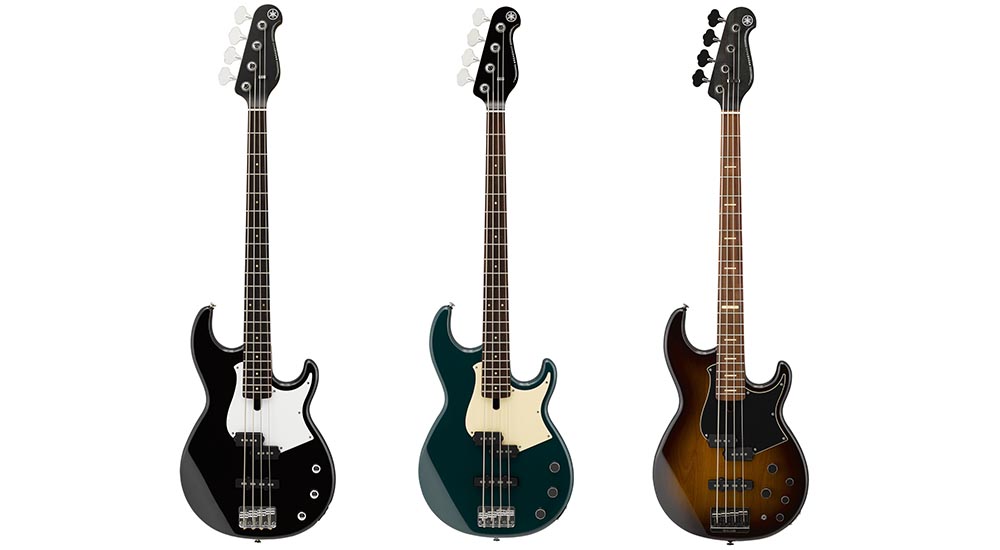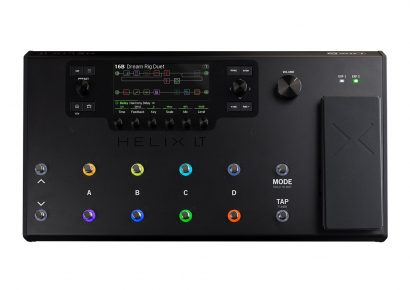Yamaha Music Australia | au.yamaha.com | Expect to pay: BB234 $549.99, BB434 $799.99, BB734 $1099
If my tinfoil hat and I didn’t know better we’d think that maybe the Yamaha Corporation, not the Rothschilds, were secretly in control of the world. They have their fingers in so many pies, from motorbikes to electronics to grand pianos, that they are the commercial equivalent of that one friend who is too good at Monopoly to play against. Far from being as dystopian as I could suspect, it seems the whole company is run on the steam of thousands of good ideas.
As instrument manufacturers their reputation precedes them; they are one of the handful of builders responsible for the infamous ‘lawsuit’ era of competitive guitar making that kept the big guys on their toes in the ’70s. Since then they’ve marched through the decades with a wry grin and a quintessential industriousness as their banner. Add to that foundation a generous dollop of playability and low-end freedom and you have pretty much described Yamaha’s new Broad Bass series of four and five string behemoths.
Read up on all the latest interviews, features and columns here.
I’ve said it before and I’ll say it again, bass players totally get the raw end of the stick as far as the rock hierarchy goes; buried in mixes, shoved up the back of the stage and grossly underrated talent wise. However, I’ve been pleased by the increased amount of innovative attention being paid to the lower clef recently. This is especially true of the three tiers of BBs I see before me. The name of the game across the board is one of the broadest colour palettes on the market.
All three iterations are carved out of the warm heft of alder, whose medium weight and density pushes the headroom and sustain expected from the tonewood alone. All three utilise custom designed, open gear tuners that not only feel suspiciously light and sensitive but also match the stylish, modern aesthetic of the graphite nut and streamlined, matte finish of the necks. The scale length is a long, 34” starting at the underside of the very bottom of the body, beveled in behind the strap lug. From start to finish these basses are loaded with some of the most up to date design optimisation imagined without veering into ‘space-bass’ territory.
As much as all that baseline information is uniform, these instruments are so distinct in the finer details that you’d be forgiven for thinking they were completely different models.
Starting with the simplest model, the 234, the biggest distinction is the Custom V3 ceramic pickup system. Twin volume controls operate both pickups, separately blending instead of stepping into your own personalised tonal texture. Add to that the familiar roll off tone pot and the signature here is like a P-Bass reinvigorated by a wider scope of possibilities and some appealingly glassy overtones. The one-piece maple construction of the neck offers a touch of brightness and stability, which is accentuated by the offset ‘D’ shape across the reverse, adding up to a fast, silky and accurate playing experience. It’s a similar neck profile to some of Ernie Ball’s newer guitars, just not as exaggerated.
The 434 takes what its companion does and finesses it. There’s a good amount more heed given to aesthetic, with colours like bottle green adding a touch of class to proceedings at this level. The first big difference I noticed was in the five-piece maple neck. A noticeably smoother ride, it is fixed to the body more firmly than I’ve ever seen. Four bolts perpendicular to the face and two angled to pull the neck towards the butt might seem excessive, but the result is even more sustain than already offered by the placement of the bridge. Essentially the tension is so evenly carried along the body that every last inch of your instrument is lifting your tone out of obscurity. The introduction of Alnico V magnets in the pickup system heats up the output a touch, which simultaneously tempers the top end and opens up the mids for a more versatile character. It’s hungrier than the 234 and it knows exactly what it needs to feel satisfied.
The 734 is a different thing entirely. This is truly a workhorse bass so loaded with options and versatility that, if I were to open a studio, it’d be one of the first things I’d get. All the greatest hits from the other two iterations are there, but the biggest difference is the active/passive switch coupled with the three-way boost/cut EQ shaping controls. Think Ernie Ball StingRay bass without all the nasal plonk and hooting overtones and then open your mind and you’ll come close to describing where the 734 sits on the frequency spectrum.
In passive mode it’s a warm, discerning voicing like an old Fender Jazz with plenty of cut in the high mids, but switch over to active and there is just about every colour on the Pantone wheel in your pickups. I had it running into an old tube guitar amp and was able to dig out anything from Krist Novoselic on In Utero-style attack and girth to Colin Greenwood molasses. There is absolutely no volume hike between the two modes too, so if you’re wild enough a player, switching mid-show is a fiddle free experience.
On top of the aforementioned mountain of versatility and stylish aesthetics, Yamaha have crafted three ultimately playable basses. They have just enough modern innovation to keep themselves ahead of the pack while never feeling like you’re at the wheel of a ship you’re not ready to steer. The Broad Bass series strikes a perfect balance between science and feel like no other.
Head to Yamaha to check out these Bass Guitars.

